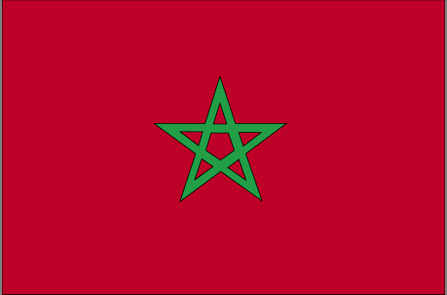To help inspire or plan your trip to Morocco, some of its major attractions
for travellers are shown below, including some of the best natural, historical, cultural and adventure sites in the country.
These include all of UNESCO World Heritage Sites for Morocco which represent the best
of the world's cultural and natural heritage.
Click on the icons below to focus on specific types of features
(click again to return to all).
|
|
|
|
|
|
|
|
|
|
|
|
 |
|---|---|---|---|---|---|---|---|---|---|---|---|
| Natural | History | Wildlife | Trekking | Cities | Religious Monument | Boat Journey | Rail Journey | Diving | Cultural | Adrenaline | UNESCO WHS |
Natural attractions in Morocco
| High Atlas Mountain Trekking | |
|---|---|
Morocco provides some of the most accessible and popular trekking opportunities in Africa. The most popular region is the High Atlas Mountains just south of Marrakech. Mount Toukbal (known locally as Jebel Toukbal) is North Africa's highest peak at 4,167 metres and is the main trekking challenge in the area. It is a tough but non-technical climb, rewarded by stunning views over the granite peaks of the Atlas Mountains, to Marrakech in the north and the Anti-Atlas Mountains and the Sahara in the south. The base camp at Neltner is at 3,200 metres from which the ascent is attempted. Other peaks of note include Jebel Ouanakirm at 4,088 metres and Jebel Adrar n'Dern at 4,001 metres. For less strenuous but equally picturesque trekking, the fertile valleys and hills of the area (such as Ouirgane Valley east of Toukbal or Tijhza Valley near Telouet) offer circuits with beautiful scenery and the chance to meet locals in remote Berber villages. | |
| Dades and Mgoun Valleys | |
|---|---|
The Dades and Mgoun Valleys in the Atlas Mountains east of Marrakech are areas of pristine natural beauty which also offer superb trekking opportunities. The circuits in this area offer beautiful mountain scenery, the famous Rose Valley (site of the Festival of the Roses every May) and the chance to explore Berber villages and meet the local people. | |
| Todra Gorge | |
|---|---|
The Todra Gorge is a spectacular canyon of the Todra River in the foothills of the Atlas Mountains in eastern Morocco. The cliffs rise vertically up to 300 metres leaving a narrow pass for the river and a track to walk through the chasm. Trekking through the canyon in the morning you can follow the local Berber women taking their goat herds to higher ground for grazing. Following them to the Abdelali viewpoint will give you spectacular vistas down into the gorge and across to the Jebel Sahro mountain range and the Dades Valley. Keep an eye out for the rare Bonelli’s Eagle that nest in the cliffs. | |
| Merzouga Sand Sea | |
|---|---|
The Merzouga Sand Sea lies on the edge of the Sahara Desert in eastern Morocco, near the small Berber village of Merzouga. This vast area of sand dunes makes for a breathtaking landscape, particularly at sunrise or sunset. The best way to experience this region is to take a camel ride to a camp in the desert and sleep under the stars enjoying traditional Moroccan food and hospitality. | |
| Draa Valley | |
|---|---|
The Draa Valley is a fertile stretch of land along the Draa River as it flows from the High Atlas Mountains to the Sahara between the Anti Atlas and Jebel Sarhro mountain ranges. The valley is lined with palm groves, kasbahs and ksars (fortified villages) with a number of interesting destinations on the way. The ksar at Tamnougalt is one of the most impressive in the valley. The oasis at Zagora is known as 'The Gate of the Desert', lying at the edge of the Sahara - it claims to be 42 camel days to Timbuktu. The village of Tinfou lies on the edge of the vast Saharan sand dunes, where a camel trek will give you a taste of the desert life. | |
| Anti Atlas Mountains | |
|---|---|
The Anti-Atlas Mountains lie to the south of the High Atlas Mountains and the Sous River. The region provides the rugged mountain scenery, lush valleys and oases and traditional villages also seen in the High Atlas but it is a region much less visited by tourists making for a more isolated and authentic setting. The area offers excellent trekking opportunities, with various grades of circuits including climbing the peaks of Jebel Aklim at 2,531 metres and Jebel Lekst at 2,359 metres. There are numerous traditional Berber villages in the mountains which can be visited on foot or by vehicle and offer insights into rural Berber life. | |


